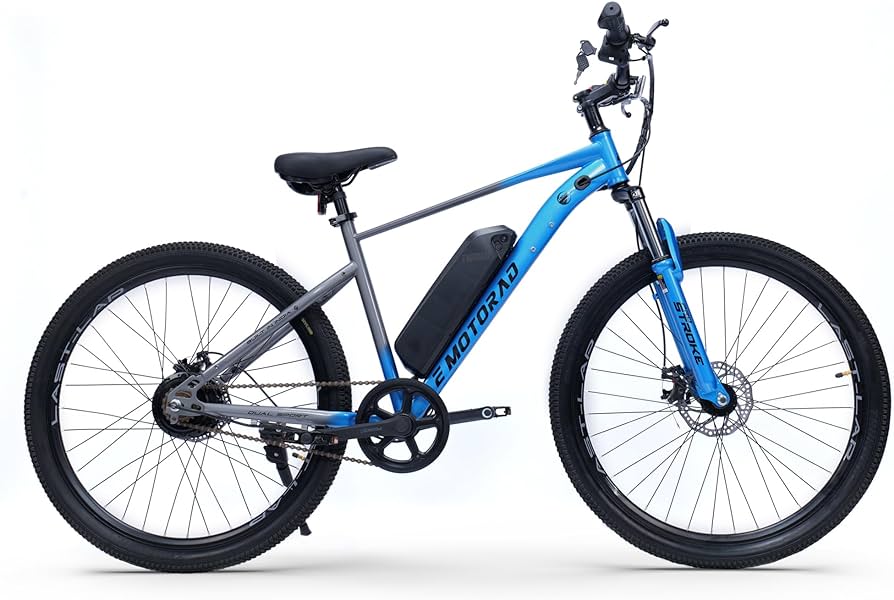
Unleashing the Power of Technology on Challenging Terrains
In the realm of outdoor adventure and adrenaline-pumping escapades, the mountain electric bike has emerged as a revolutionary force, combining the thrill of mountain biking with the efficiency of electric power. This convergence of nature and technology has given birth to a new breed of bicycles designed to conquer the steepest ascents and navigate the toughest terrains. Let’s delve into the world of mountain electric bikes and explore the reasons behind their surging popularity.
I. The Evolution of Mountain Biking
Tracing the Roots
Mountain biking, as a sport and recreational activity, has evolved significantly since its inception. From its humble beginnings as a fringe pursuit in the 1970s to becoming a mainstream outdoor activity, the allure of navigating challenging trails and rugged landscapes has captivated enthusiasts worldwide. However, as the appetite for more extreme and technical trails grew, so did the need for a means to overcome the physical challenges posed by these terrains.
II. The Fusion of Power and Pedals
Introducing the Mountain Electric Bike
Enter the mountain electric bike—a game-changer in the world of off-road cycling. These bikes seamlessly blend traditional pedal power with an electric motor, creating a formidable hybrid that allows riders to ascend hills and conquer obstacles with ease. The electric motor, powered by rechargeable batteries, provides an extra boost when the going gets tough, making uphill climbs and challenging trails more accessible to riders of varying skill levels.
III. Key Features of Mountain Electric Bikes
1. Powerful Motors
At the heart of every mountain electric bike is a robust electric motor. These motors come in various power ratings, measured in watts, with higher wattages delivering more torque and assistance. The power output can often be adjusted, allowing riders to tailor the level of assistance to their preferences or the demands of the terrain.
2. Long-lasting Batteries
To ensure an extended off-road adventure, mountain electric bikes are equipped with high-capacity batteries. Lithium-ion batteries, known for their energy density and longevity, are the preferred choice, providing riders with the confidence to tackle longer trails without the fear of running out of power.
3. Responsive Pedal Assistance
One of the defining features of mountain electric bikes is their pedal-assist system. This technology ensures that the electric motor kicks in only when the rider is pedaling, creating a seamless and natural riding experience. The level of assistance can often be adjusted, allowing riders to fine-tune the balance between human effort and electric power.
4. Durable Frame and Suspension
Recognizing the demands of off-road terrain, mountain electric bikes are built with durable frames and advanced suspension systems. Robust materials such as aluminum and carbon fiber are commonly used to withstand the rigors of rocky descents and bumpy trails. The suspension, often featuring adjustable settings, enhances rider comfort and control.
IV. Advantages of Mountain Electric Bikes
1. Accessibility
Perhaps the most significant advantage of mountain electric bikes is their ability to make off-road cycling more accessible to a broader audience. Novice riders can tackle challenging trails without the fear of exhaustion, while seasoned cyclists can push their limits and explore more demanding routes.
2. Extended Range
The integration of electric power extends the range of mountain biking adventures. Riders can cover more ground, explore remote trails, and embark on day-long excursions without being limited by their physical endurance.
3. Eco-friendly Exploration
With the increasing emphasis on eco-friendly transportation, mountain electric bikes align with the principles of sustainable outdoor recreation. By reducing the reliance on traditional combustion engines for off-road adventures, these bikes offer a greener alternative for nature enthusiasts.
V. Challenges and Considerations
1. Weight
While advancements in technology have made electric bike components more lightweight, the additional hardware, including the motor and battery, still contributes to the overall weight of the bike. This factor can affect maneuverability and handling, especially in technical sections of a trail.
2. Cost
Mountain electric bikes often come with a higher price tag compared to their traditional counterparts. The inclusion of electric components and advanced features contributes to the increased cost. However, as technology advances and becomes more widespread, prices are expected to become more competitive.
VI. The Future of Mountain Electric Bikes
Continued Innovation
As the popularity of mountain electric bikes continues to surge, manufacturers are investing in research and development to further enhance their capabilities. Innovations in battery technology, motor efficiency, and lightweight materials are expected to drive the evolution of these bikes, making them even more appealing to a diverse range of riders.
Integration of Smart Features
The future landscape of mountain electric bikes may see the integration of smart features such as GPS navigation, fitness tracking, and connectivity with mobile devices. These additions could enhance the overall riding experience and provide riders with valuable data and insights into their performance.
VII. Conclusion
Mountain electric bikes represent a thrilling fusion of raw, human-powered athleticism and cutting-edge technology. As the outdoor adventure community continues to grow, these bikes offer a gateway to uncharted trails and untamed landscapes. With their power, versatility, and eco-friendly credentials, mountain electric bikes are poised to become an integral part of the modern off-road cycling experience, empowering riders to conquer peaks and explore the great outdoors like never before.
Also Read: Harley Electric Bike
Buy Sur-Ron Lower Headset – Steering Stem online